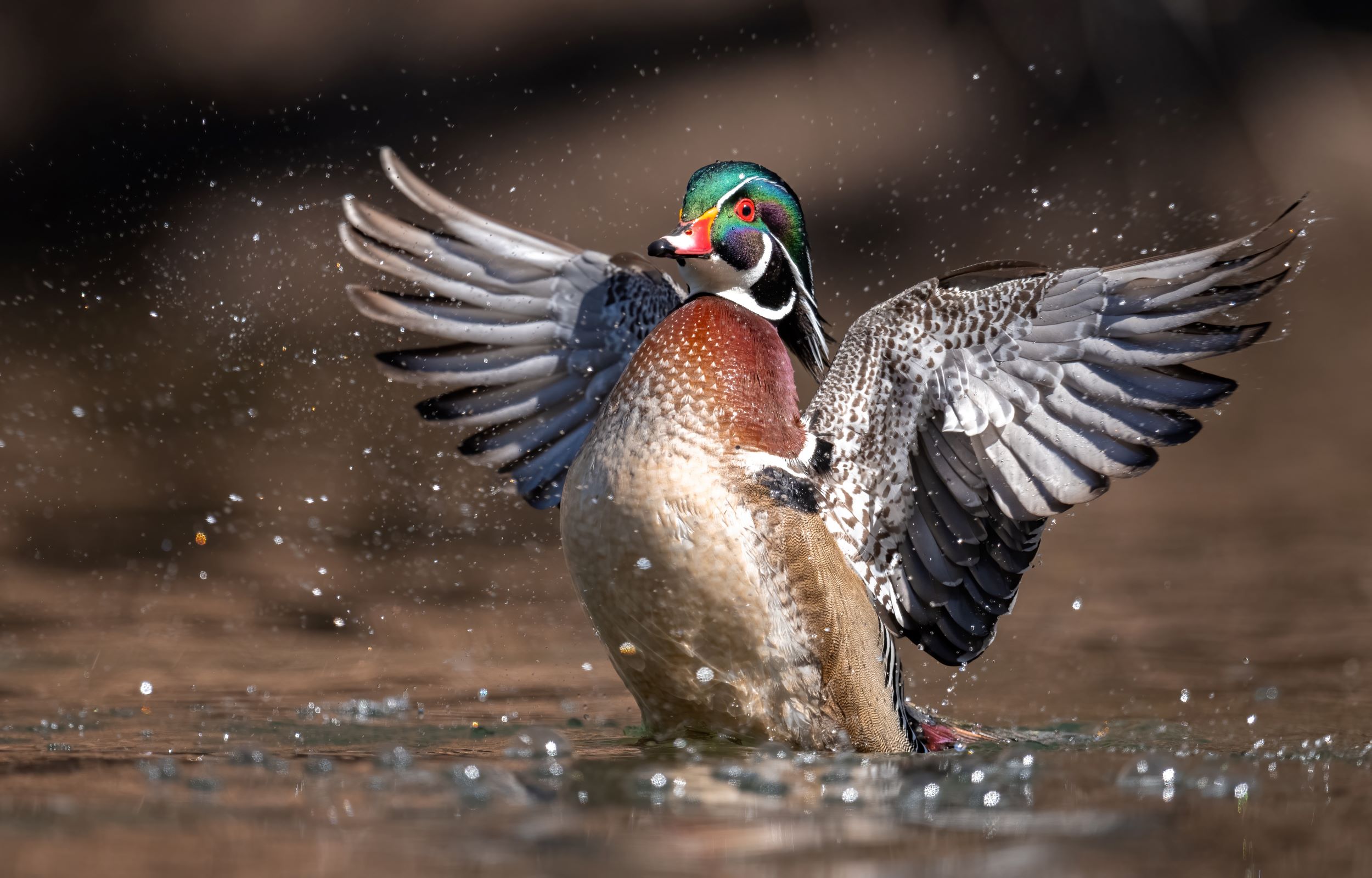
Perching Ducks in Utah
Perching ducks, characterized by their ability to perch and nest in trees, add a unique dimension to the waterfowl families found in diverse ecosystems worldwide. In Utah, the most commonly known perching duck is the Wood Duck, but the state also occasionally hosts another stunning example of this group: the Mandarin Duck. Native to East Asia, the Mandarin Duck is similar in its tree-perching habits and is occasionally sighted in Utah, likely as escapees from captivity or from private collections. These ducks are renowned for their breathtaking plumage, especially in males, which display a kaleidoscope of colors and elaborate feather patterns.
The Wood Duck, Aix sponsa, remains the primary perching duck species in Utah, celebrated for its striking coloration and unique arboreal nesting habits. Males are resplendent with iridescent greens, blues, and purples on their heads, complemented by white stripes and chestnut breasts. Females, with their mottled brown plumage and distinctive white eye markings, are equally charming. These ducks utilize tree cavities near water bodies for nesting, a trait that provides protection from ground predators and aligns with their adaptation to forested wetland environments. The provision of artificial nesting boxes in Utah has become an essential conservation strategy, helping to bolster local Wood Duck populations.
Mandarin Ducks, though not native to Utah or North America, bring an exotic flair when they are spotted. The males are particularly striking with their ornate feather arrangements and bright colors, including vibrant oranges and greens. The females are more subdued but elegantly patterned with mottled browns and whites. Like the Wood Duck, the Mandarin Duck nests in tree cavities, exhibiting similar perching abilities. Their presence in Utah, although uncommon, is a reminder of the global diversity of perching ducks and the importance of habitat conservation.
The diet of both Wood Ducks and Mandarin Ducks in Utah reflects their adaptability to both aquatic and terrestrial food sources. They forage for seeds, fruits, insects, and small aquatic organisms, playing a crucial role in their respective ecosystems by controlling insect populations and aiding in seed dispersal. This feeding behavior underlines the ecological importance of these species in maintaining the balance within their habitats.
During the breeding season, Wood Ducks and Mandarin Ducks engage in complex and fascinating courtship rituals. This period is marked by vibrant displays of plumage and a variety of vocalizations and physical displays, designed to attract mates and establish pair bonds. The nesting habits of these ducks, with their preference for tree cavities, highlight the importance of woodland conservation alongside wetland preservation.
Other examples of perching ducks found outside of Utah include species like the African Pygmy Goose and the Comb Duck. The , one of the smallest waterfowl species, is known for its striking appearance and tree-perching behavior. Similarly, the Comb Duck, found in tropical regions of South America, Africa, and Asia, is notable for its large, fleshy comb on the upper mandible and its habit of nesting in tree cavities.
In Utah, conservation efforts for perching ducks like the Wood Duck and occasional sightings of Mandarin Ducks emphasize the importance of protecting and managing wetland and forested areas. These habitats are vital for the survival of perching ducks, providing them with feeding grounds, nesting sites, and protection. The presence of these ducks in Utah’s ecosystems is a testament to the rich biodiversity of the region and highlights the interconnectedness of various habitats in supporting diverse wildlife populations.
Overall, perching ducks, whether it's the native Wood Duck in Utah or the exotic Mandarin Duck, along with their counterparts in other parts of the world, represent a fascinating and important group of waterfowl. Their unique adaptations for tree perching and nesting contribute significantly to the ecological diversity of their habitats. The protection and conservation of these species and their environments are crucial for maintaining the balance and health of ecosystems globally.